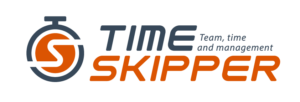In 2023, let’s save margins!

The economic slump in which the retail sector is evolving has settled comfortably this year. With inflation dampening consumer confidence, the average basket has been recomposed to favor less expensive products, and volumes are down. And this, while operating costs and salaries are soaring in unison, investments linked to their model’s transformation (digitalization, CSR, …) remain necessary. As far as profitability is concerned, the sector has seen much better times!
Maintaining activity by controlling costs while continuing to invest will enable us to limit the decline in profitability for 2023 and emerge stronger from this crisis.
Not easy in this context, mainly since one of the keys to the equation lies in increasing productivity!
This means that within this hostile situation, two imperatives will prevail – and indeed already do- to keep employees better occupied during their working day and help them be more efficient.
The good news – let’s be lucid but remain positive – is that levers exist and that stores can capture them thanks to activity management and implementing innovations.
It remains now to know and follow the proper steps rigorously. Details by Timeskipper …
TO REMEMBER
To limit the erosion of margins in 2023, two productivity levers: activity management and innovation
The condition: measure the “time” data to permanently capture the available hours and reallocate them to the needs of the activity.
The medium: a tool to orchestrate productivity gains
FIRST FACTOR OF PRODUCTIVITY: BETTER OCCUPANCY OF EMPLOYEES
That’s easy to say when time seems to be running out, and freewheeling turnover adds to the difficulty of recruiting!
However, 20 to 30% of the hours worked in the store could be better used.
Indeed, within the traditional activities of the store, it is frequent to notice that some paid hours are devoted to tasks with less added value, while others need to be more occupied to complete a task. Ultimately, time is wasted to the detriment of profitability, whereas it constitutes a real reserve of productivity!
Indeed, these hours represent margins of maneuver, allowing us to compensate for the overload of work and to absorb absences, but also to set up differentiating actions (promotional operations and commercial animations) to maintain the market share and not to lose too much volume.
The challenge is to know how to identify these times and allocate them according to the needs of the activity, to operate at the lowest cost. This is crucial for e-commerce activities, which cost the store more regarding order preparation. In this case, it is essential to know the margins of maneuver at any time of the day to optimize the store’s resources. The objective is to allocate them to order preparation or even to open new slots if available hours are taken to achieve additional sales on the one hand and to contain the rise in operating costs on the other.
SECOND PRODUCTIVITY FACTOR: CONTINUE TO INVEST IN INNOVATION TO ACHIEVE EFFICIENCY GAINS
Increasing productivity invariably involves improving operational efficiency. We are talking about technological and organizational solutions to “do better and faster” as part of a digital and CSR transformation, which is already well underway for some brands.
This exercise requires continued investment to improve efficiency on the sales floor and concerns both the optimization of delivery flows and the provision of innovative tools, such as
– RFID technology for reliability and inventory management,
– Smartway-type applications, which reduce scrap processing time and reduce unsold goods,
– electronic labels, which, when coupled with on-shelf cameras (an SES-Imagotag innovation), are highly effective solutions for preventing stock-outs and better-managing inventory,
– the mobility of sales advisors in specialized distribution for faster access to available stock to inform customers or place an order directly, for example,
-…
The maxim “Retail is Detail” is still valid! Even in the age of technology, the combination of small efficiency gains with new tools makes it possible to improve the situation as they are used!
ORCHESTRATE PRODUCTIVITY GAINS BY CONTROLLING ACTIVITY WITH TIMESKIPPER
As you will understand, productivity optimization does not allow for approximation. Given the current economic situation, it is imperative to rely first on a reference system that measures the duration of tasks to identify the hours that can be better used and calculate the productivity gains linked to the introduction of innovations.
Then it is essential to calculate the workload, considering the variations in activity, to distribute it to the right people at the right time and for a suitable duration.
This measurement requirement is the core business of Timeskipper.
The Timeskipper solution allows you to see the workload level and the occupancy rates of the teams and each employee at any time. The possibilities for action are therefore known at all times during the day.
Moreover, by integrating the contributions of each technology that helps individuals to complete their tasks more quickly and in a better way, the Timeskipper tool makes it possible to highlight the time made available through innovation.
It is also important to note that thanks to the solution, the manager can introduce greater fairness in the workload distribution and give better visibility to each employee, whose autonomy is then increased. Thus, an authentic culture of continuous improvement is established within the teams.
The Timeskipper solution orchestrates the point-of-sale activity through its measurement and management functions. It not only improves productivity by keeping teams better occupied but also facilitates the introduction of innovations and the evaluation of their effectiveness in the store’s operational model.
You now have a lead to follow to make money in 2023 despite the difficult economic situation. The icing on the cake is that its ROI is very fast!
 You want to know more about
You want to know more about
the TimeSkipper platform?
NEWSLETTER


